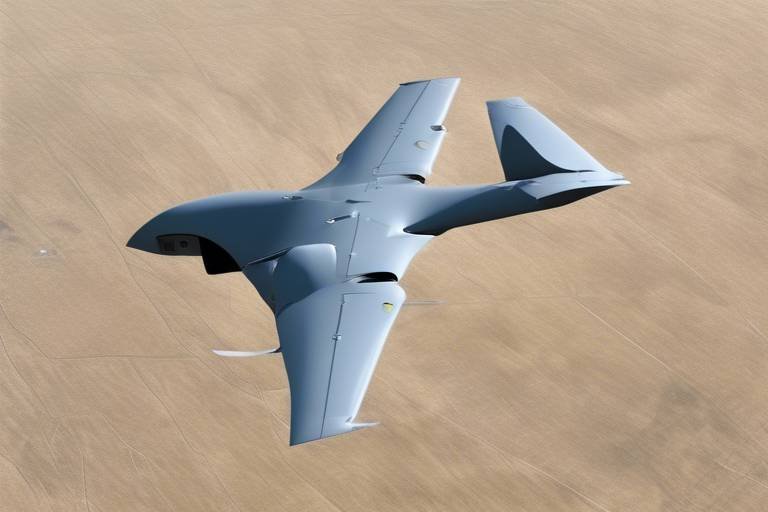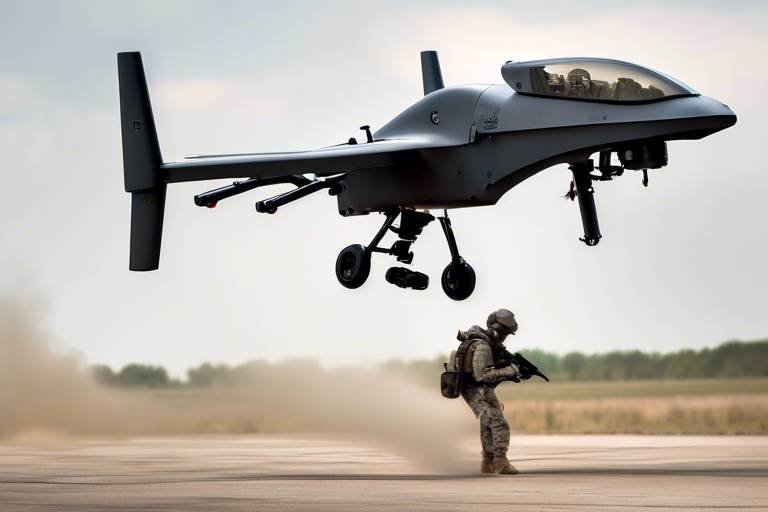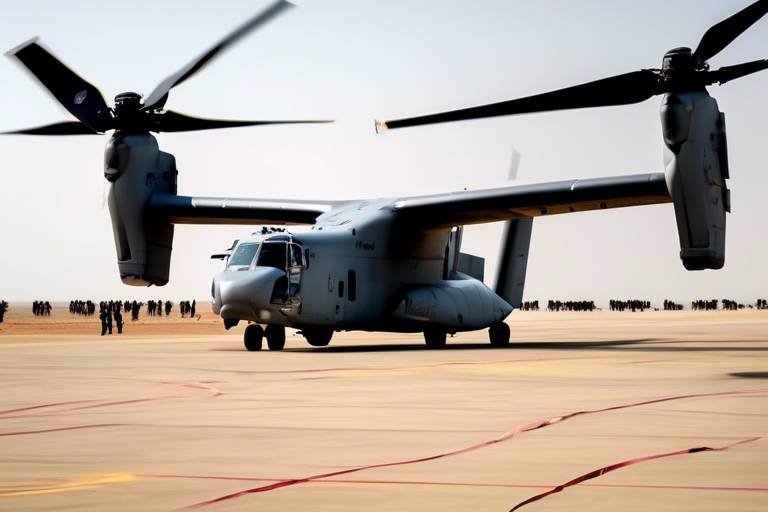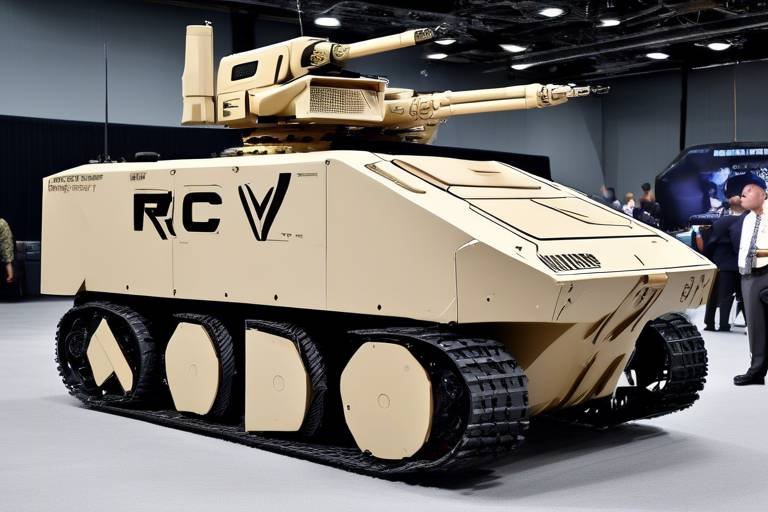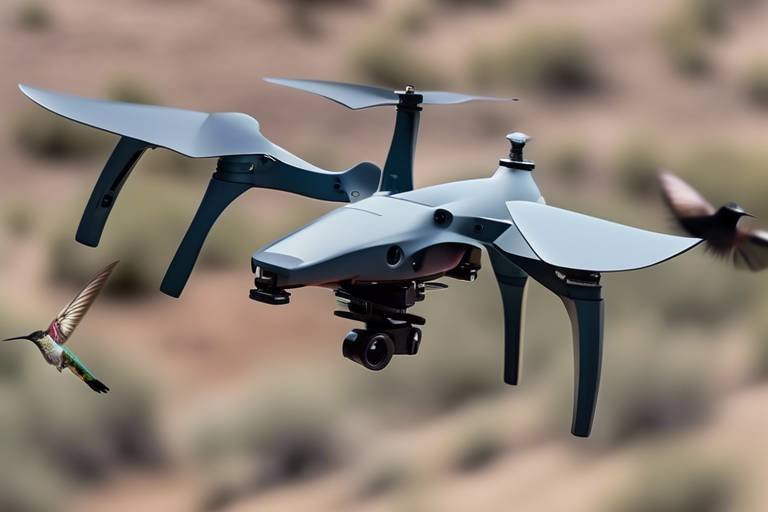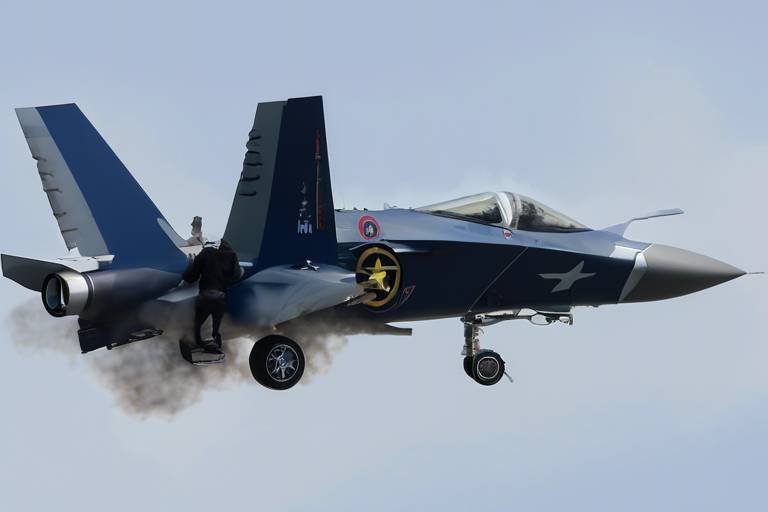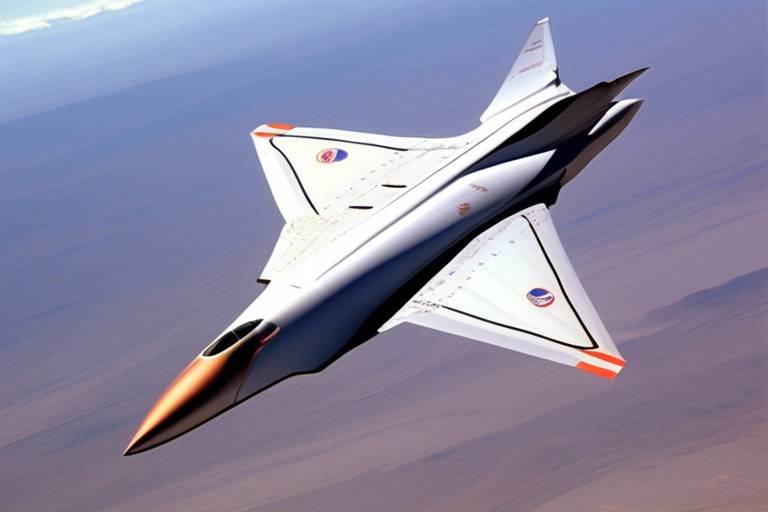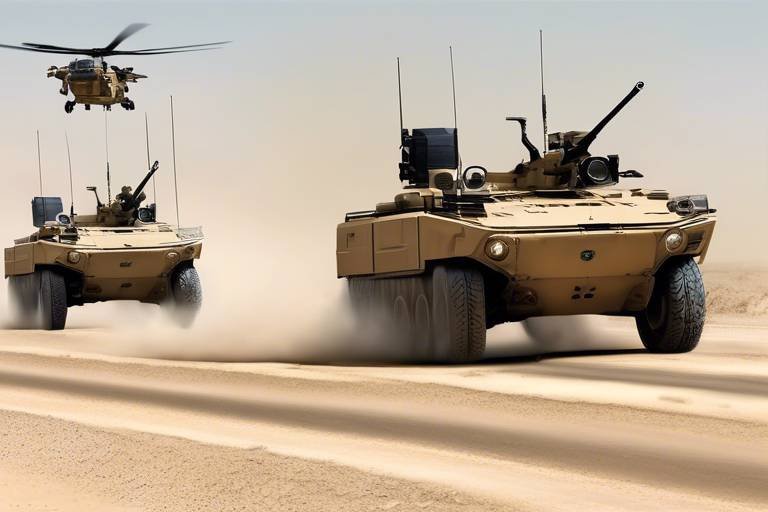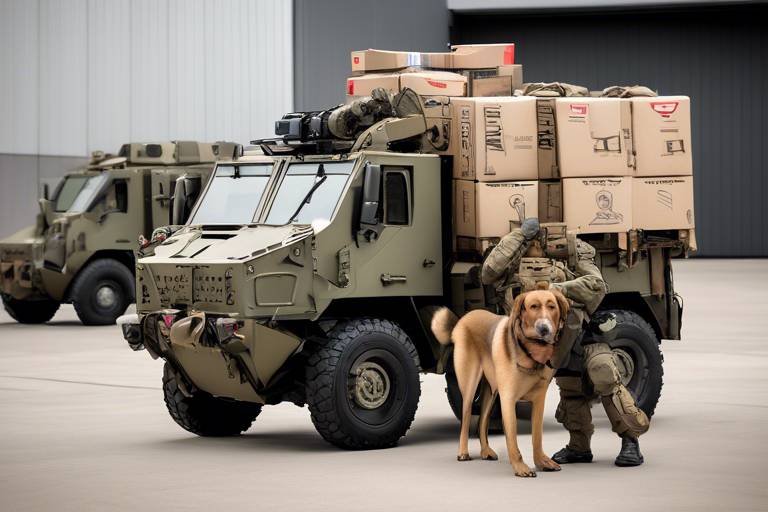How the Robotic Dragonfly is Transforming UAV Technologies
In the world of Unmanned Aerial Vehicles (UAVs), innovation is the name of the game. Enter the robotic dragonfly, a marvel of engineering that draws inspiration from nature to revolutionize how we think about drones. Imagine a flying machine that can dart through the air with the grace of a dragonfly, navigating through tight spaces and performing complex maneuvers with ease. This isn't just a dream; it's becoming a reality thanks to advancements in technology that mimic the biological mechanisms of these incredible insects.
The robotic dragonfly represents a significant leap forward in UAV technology, showcasing how nature can inspire cutting-edge design and functionality. With its lightweight materials, advanced sensors, and bio-inspired wing designs, this innovative UAV is not only agile but also efficient. Picture a drone that can hover, dart, and glide seamlessly, making it perfect for a variety of applications—from surveillance to environmental monitoring. The implications for industries are vast, leading to a new era of UAV capabilities that were previously unimaginable.
In this article, we will delve into the fascinating world of robotic dragonflies, exploring their design principles, key features, and the myriad of applications they serve. We'll also discuss the challenges faced in their development, including technical limitations and regulatory hurdles. So, buckle up as we take a closer look at how these remarkable machines are transforming the landscape of UAV technologies!
Understanding the biology of dragonflies offers valuable insights into their robotic counterparts. Dragonflies are known for their incredible flying abilities, which include agility, speed, and precision. By studying these creatures, engineers have been able to replicate their flight mechanisms, leading to the development of UAVs that can perform similarly intricate aerial maneuvers.
This bio-inspired design approach not only enhances the agility and efficiency of UAVs but also opens up new possibilities for applications in various fields. For instance, in agriculture, robotic dragonflies can navigate through crops with minimal disturbance, allowing for targeted surveillance and monitoring of plant health. In surveillance, their ability to maneuver through urban environments with ease makes them ideal for security and reconnaissance missions.
Robotic dragonflies are equipped with several unique features that set them apart from traditional UAVs. These include:
- Advanced Sensors: They come fitted with high-resolution cameras and environmental sensors, enabling them to gather data effectively.
- Lightweight Materials: The use of composite materials ensures that these drones are not only robust but also lightweight, enhancing their flight capabilities.
- Bio-Inspired Wing Designs: Their wings mimic those of real dragonflies, allowing for enhanced lift and maneuverability.
One of the standout features of robotic dragonflies is their exceptional agility. Unlike traditional drones that may struggle with sharp turns or tight spaces, these UAVs can perform complex aerial maneuvers with remarkable precision. This agility makes them ideal for tasks requiring flexibility in challenging environments, such as navigating through dense forests or urban landscapes.
The innovative control systems integrated into robotic dragonflies allow them to execute intricate flight patterns. These systems utilize advanced algorithms that enable real-time adjustments based on environmental feedback, ensuring smooth and stable flight even in unpredictable conditions.
Another significant advantage of robotic dragonflies is their focus on energy efficiency. The design principles behind these UAVs prioritize longer flight durations, which translates to reduced operational costs. This makes them not only effective but also economical for various applications.
The versatility of robotic dragonflies is evident in their applications across multiple sectors. Here are a few notable examples:
- Agriculture: Monitoring crop health and assessing irrigation needs.
- Surveillance: Conducting security checks in urban areas.
- Environmental Monitoring: Collecting data on wildlife and natural resources.
Despite their potential, the development of robotic dragonflies is not without challenges. Technical limitations, environmental adaptability, and regulatory hurdles pose significant obstacles that must be addressed. For instance, current technological constraints impact the performance and reliability of these UAVs, necessitating ongoing research and innovation in materials and design.
As with any emerging technology, the performance of robotic dragonflies is influenced by the current state of materials and engineering. Ongoing research is essential to push the boundaries of what's possible, ensuring that these UAVs can operate effectively in a variety of conditions.
As robotic dragonflies become more prevalent, addressing regulatory and ethical concerns is crucial. Ensuring safe and responsible use in various applications will require collaboration between engineers, policymakers, and the communities affected by their deployment.
- What industries can benefit from robotic dragonflies? Robotic dragonflies can be used in agriculture, surveillance, environmental monitoring, and more.
- How do robotic dragonflies achieve their agility? They utilize bio-inspired wing designs and advanced control systems to perform complex maneuvers.
- What are the main challenges in developing robotic dragonflies? Technical limitations, environmental adaptability, and regulatory hurdles are the primary challenges faced.

The Inspiration Behind the Robotic Dragonfly
The world of robotics has always looked to nature for inspiration, and one of the most fascinating examples is the dragonfly. These incredible insects, with their intricate wing structures and unparalleled agility, have become a model for the design of advanced UAV technologies. By studying the biological mechanisms that allow dragonflies to perform their remarkable aerial feats, engineers and researchers have been able to develop robotic counterparts that mimic these capabilities, leading to significant advancements in unmanned aerial vehicles (UAVs).
Dragonflies possess a unique combination of features that contribute to their flight efficiency. Their wings can move independently, allowing for complex maneuvers and rapid changes in direction. This independence is a crucial aspect that robotic designers aim to replicate. The ability to hover, dart, and glide effortlessly through the air makes the dragonfly an exceptional model for UAV design. By incorporating similar mechanics, robotic dragonflies are engineered to achieve a level of agility that traditional drones simply cannot match.
Moreover, dragonflies are equipped with specialized sensors that help them navigate their environment with remarkable precision. These biological sensors provide vital information about their surroundings, enabling them to react swiftly to changes. Robotic dragonflies are outfitted with advanced sensors that mimic these biological functions, enhancing their ability to operate in complex environments. This capability is particularly valuable in applications such as search and rescue missions, where real-time data is critical for successful outcomes.
Another fascinating aspect of dragonflies is their energy efficiency. These insects have evolved to optimize their flight patterns, conserving energy while maximizing their range and agility. Robotic designs aim to replicate this efficiency through lightweight materials and innovative propulsion systems. By focusing on energy conservation, robotic dragonflies can achieve longer flight durations, making them more effective for extended missions without the need for frequent recharging or refueling.
In summary, the inspiration behind the robotic dragonfly is deeply rooted in the biological marvels of its natural counterpart. By studying the intricate mechanics of dragonfly flight, researchers are not only enhancing the performance of UAV technologies but also paving the way for groundbreaking applications across various industries. As we continue to explore and understand the genius of nature, the potential for innovation in robotics seems limitless.
- What are robotic dragonflies used for? Robotic dragonflies are utilized in various applications, including agriculture for crop monitoring, surveillance for security purposes, and environmental monitoring to assess ecosystem health.
- How do robotic dragonflies mimic real dragonflies? They replicate the independent wing movements, advanced sensors, and energy-efficient designs of real dragonflies, allowing them to perform complex aerial maneuvers.
- What challenges do developers face in creating robotic dragonflies? Challenges include technical limitations in materials and design, environmental adaptability, and navigating regulatory and ethical considerations.

Key Features of Robotic Dragonflies
The robotic dragonfly is not just a marvel of engineering; it embodies a blend of nature's brilliance and cutting-edge technology. At the heart of its design are several key features that set it apart from traditional UAVs. These features enhance its performance, making it a game-changer in various industries.
One of the most significant aspects of robotic dragonflies is their advanced sensors. These sensors allow the robotic dragonfly to gather real-time data about its surroundings, enabling it to navigate complex environments with ease. Imagine a tiny drone that can detect obstacles, track moving objects, and even monitor environmental conditions—all while flying in a graceful manner similar to its biological counterpart. This capability is essential for applications ranging from agricultural monitoring to search and rescue missions.
Another standout feature is the use of lightweight materials. Robotic dragonflies are constructed using cutting-edge composites and polymers that reduce weight without sacrificing strength. This is crucial because a lighter drone can achieve greater flight efficiency, allowing for longer missions and reduced energy consumption. Think of it as a bird that can soar effortlessly through the sky, thanks to its lightweight feathers.
Additionally, the bio-inspired wing designs of robotic dragonflies play a pivotal role in their flight capabilities. The wings mimic the unique structure and movement of real dragonfly wings, enabling a range of aerial maneuvers that traditional drones simply can't match. These designs provide not only agility but also enhance stability during flight, making robotic dragonflies suitable for tasks that require precision and control.
The agility of robotic dragonflies is nothing short of extraordinary. They can perform complex aerial maneuvers, such as rapid ascents, sharp turns, and hovering in place. This level of maneuverability makes them ideal for tasks in challenging environments, such as navigating through dense forests or urban landscapes. It's like watching a skilled dancer move effortlessly across the stage, adapting to the rhythm of the music.
At the core of their sophisticated flight capabilities are innovative control systems. These systems utilize advanced algorithms and machine learning techniques to enable robotic dragonflies to execute intricate flight patterns with precision. By processing data from their sensors in real-time, these drones can adjust their flight paths dynamically, ensuring they remain on course even in unpredictable conditions. It's akin to having a seasoned pilot at the helm, capable of making split-second decisions to navigate through turbulence.
Energy efficiency is another vital feature of robotic dragonflies. Their design focuses on optimizing power consumption, allowing for longer flight durations compared to traditional UAVs. This means they can cover more ground without needing frequent recharges, making them an economical choice for various applications. Picture a hybrid car that can go the distance on a single tank of gas—this is the kind of efficiency robotic dragonflies bring to the table.
In summary, the combination of advanced sensors, lightweight materials, bio-inspired wing designs, and innovative control systems makes robotic dragonflies a revolutionary force in the world of UAV technologies. Their agility, energy efficiency, and versatility are paving the way for new applications across diverse industries, from agriculture to environmental monitoring.
- What industries are using robotic dragonflies? Robotic dragonflies are being utilized in agriculture, surveillance, environmental monitoring, and search and rescue operations.
- How do robotic dragonflies compare to traditional drones? They offer enhanced agility, advanced sensors, and greater energy efficiency, making them more versatile for complex tasks.
- What challenges do robotic dragonflies face? They face technical limitations, regulatory hurdles, and the need for further research to improve their capabilities.

Agility and Maneuverability
The agility and maneuverability of robotic dragonflies are nothing short of astounding. These remarkable UAVs are designed to mimic the intricate flight patterns of their biological counterparts, the dragonflies, which are known for their exceptional aerial abilities. Imagine a tiny aircraft that can dart, hover, and change direction with the grace of a ballet dancer. This is precisely what robotic dragonflies bring to the table. Their ability to perform complex aerial maneuvers makes them an ideal choice for tasks that require precision and flexibility, especially in challenging environments where traditional UAVs may falter.
One of the standout features of these robotic marvels is their ability to execute rapid directional changes. This is achieved through their unique wing structure, which allows for independent wing movement. Unlike conventional drones that rely on fixed propellers, robotic dragonflies can tilt and rotate their wings, enabling them to perform acrobatic feats such as backflips and sharp turns. This level of control is particularly advantageous in situations where navigating through tight spaces or avoiding obstacles is crucial, such as in urban environments or dense forests.
Moreover, the advanced control systems integrated into robotic dragonflies enhance their agility. These systems utilize sophisticated algorithms that process real-time data from various onboard sensors, allowing the UAV to react swiftly to changes in its surroundings. For instance, if a robotic dragonfly encounters an unexpected obstacle, it can instantly adjust its flight path, ensuring safe navigation. This capability is akin to having a pilot with lightning-fast reflexes, capable of making split-second decisions to avoid collisions.
In addition to their impressive maneuverability, robotic dragonflies are also incredibly energy-efficient. Their lightweight materials and aerodynamic designs allow them to glide effortlessly through the air, reducing the energy required for flight. This efficiency not only extends their flight duration but also minimizes operational costs, making them a viable option for long-term projects. In fact, studies have shown that robotic dragonflies can achieve flight times significantly longer than traditional UAVs, which is a game-changer in industries that rely on extended aerial surveillance or data collection.
To summarize, the agility and maneuverability of robotic dragonflies are key factors that set them apart from other UAV technologies. Their ability to perform complex maneuvers, combined with advanced control systems and energy efficiency, positions them as a powerful tool in various applications. As we continue to explore the potential of these innovative machines, it's clear that they are not just a technological marvel but also a glimpse into the future of UAV capabilities.
- What makes robotic dragonflies different from traditional drones?
Robotic dragonflies have advanced wing designs that allow for greater agility and maneuverability, enabling them to perform complex aerial maneuvers that traditional drones cannot. - How do robotic dragonflies achieve energy efficiency?
They are designed with lightweight materials and aerodynamic shapes, which reduce energy consumption and extend flight duration compared to conventional UAVs. - What industries can benefit from robotic dragonflies?
Robotic dragonflies can be utilized in various sectors, including agriculture, surveillance, environmental monitoring, and search and rescue operations. - Are there any challenges in developing robotic dragonflies?
Yes, challenges include technical limitations, environmental adaptability, and regulatory hurdles that need to be addressed for their widespread use.

Advanced Control Systems
The evolution of robotic dragonflies has brought forth a new era in Unmanned Aerial Vehicles (UAVs), particularly through the integration of . These systems are not just about making the drones fly; they are about enabling them to perform intricate maneuvers with astonishing precision. Imagine a dragonfly darting between flowers, effortlessly changing direction and speed—this is the level of agility that engineers aim to replicate in robotic counterparts.
At the heart of these advanced control systems lies a combination of sensors, algorithms, and feedback mechanisms that work together to ensure optimal performance. For instance, the use of gyroscopic sensors allows robotic dragonflies to maintain stability during flight, even in windy conditions. This is akin to how a tightrope walker uses a pole for balance; the sensors provide the necessary feedback to keep the drone steady in the air.
Moreover, the incorporation of machine learning algorithms enables these UAVs to adapt to their environments. Through continuous learning from their surroundings, robotic dragonflies can improve their flight patterns, making them more efficient over time. This is similar to how we learn to navigate through a crowded room; the more we practice, the better we become at avoiding obstacles. As a result, these drones can perform complex tasks, such as navigating through dense forests or urban landscapes, with remarkable ease.
One of the standout features of these control systems is their ability to execute intricate flight patterns. With the help of autonomous navigation systems, robotic dragonflies can follow pre-programmed routes or adapt to real-time changes in their environment. This flexibility is crucial for applications ranging from search and rescue missions to agricultural monitoring. Imagine a robotic dragonfly flying over a crop field, adjusting its path based on the presence of obstacles like trees or power lines, all while capturing vital data about the health of the crops below.
Furthermore, the integration of swarm technology into these control systems allows multiple robotic dragonflies to work together seamlessly. This collective behavior mimics that of real dragonflies, which often fly in groups for better foraging and protection. By coordinating their movements, these drones can cover larger areas more efficiently, making them invaluable for tasks such as environmental monitoring and wildlife tracking.
In summary, the advanced control systems in robotic dragonflies are revolutionizing UAV technologies by enhancing their agility, adaptability, and efficiency. As these systems continue to evolve, we can expect even more groundbreaking applications that will change the way we think about drone technology.
- What are robotic dragonflies?
Robotic dragonflies are unmanned aerial vehicles inspired by the biological mechanisms of real dragonflies, designed for enhanced agility and efficiency. - How do advanced control systems work in robotic dragonflies?
They integrate sensors, algorithms, and feedback mechanisms to enable precise maneuverability and adaptive learning in various environments. - What applications do robotic dragonflies have?
They are used in agriculture, surveillance, environmental monitoring, and other fields requiring precise aerial capabilities. - What challenges do robotic dragonflies face?
Challenges include technical limitations, environmental adaptability, and regulatory hurdles that need to be addressed for widespread use.

Energy Efficiency
The design of robotic dragonflies is a game changer when it comes to . Imagine the way a dragonfly flits effortlessly from flower to flower, using minimal energy to navigate its environment. This natural marvel inspires engineers and designers to create UAVs that mimic these efficient movements. By focusing on lightweight materials and innovative propulsion systems, robotic dragonflies can achieve longer flight durations without the need for frequent recharging or refueling.
One of the key aspects of energy efficiency in robotic dragonflies is their bio-inspired wing design. These wings are not just for show; they enable the dragonflies to perform complex aerial maneuvers while consuming less power. The unique structure of their wings allows for a higher lift-to-drag ratio, which means they can glide and hover with minimal effort. This is akin to a skilled dancer who knows how to conserve energy while performing intricate routines.
Furthermore, robotic dragonflies utilize advanced energy management systems that optimize power consumption during flight. By analyzing data in real-time, these systems can adjust the UAV's speed and altitude, ensuring that energy is used efficiently. For instance, when a robotic dragonfly detects a change in wind conditions, it can alter its flight path to maintain stability without expending excess energy. This adaptability is crucial for operations in unpredictable environments, such as during agricultural monitoring or search and rescue missions.
To illustrate the benefits of energy efficiency in robotic dragonflies, consider the following comparison between traditional UAVs and robotic dragonflies:
| Feature | Traditional UAVs | Robotic Dragonflies |
|---|---|---|
| Flight Duration | 30-60 minutes | Up to 120 minutes |
| Energy Source | Heavy batteries | Lightweight, efficient power systems |
| Operational Cost | Higher due to frequent recharges | Lower with extended flight capabilities |
As you can see, robotic dragonflies not only outperform traditional UAVs in terms of flight duration but also significantly reduce operational costs. This makes them an attractive option for industries looking to maximize efficiency while minimizing expenses. Additionally, their ability to operate longer without needing a recharge means they can cover larger areas, making them invaluable for tasks such as environmental monitoring and agricultural assessments.
In conclusion, the energy efficiency of robotic dragonflies is not just a technological advancement; it represents a shift towards more sustainable practices in UAV technology. By learning from nature and implementing these principles into design and function, robotic dragonflies are paving the way for a future where drones can operate longer and more efficiently, ultimately benefiting various industries and applications.
- What makes robotic dragonflies more energy-efficient than traditional UAVs?
Robotic dragonflies utilize lightweight materials, bio-inspired wing designs, and advanced energy management systems, allowing them to achieve longer flight durations and lower operational costs. - Can robotic dragonflies operate in challenging weather conditions?
Yes, their design allows for adaptability in various environmental conditions, making them suitable for tasks in unpredictable weather. - What industries benefit from robotic dragonflies?
Robotic dragonflies are being utilized in agriculture, surveillance, environmental monitoring, and more, showcasing their versatility across multiple sectors.

Applications in Various Industries
The emergence of robotic dragonflies has paved the way for groundbreaking advancements across several industries. These remarkable machines are not just a marvel of engineering; they represent a significant leap forward in how we approach various tasks that require precision, agility, and efficiency. From agriculture to surveillance, the applications of robotic dragonflies are as diverse as they are impactful.
In the agricultural sector, robotic dragonflies are revolutionizing the way farmers monitor their crops. Equipped with advanced sensors, these UAVs can assess plant health, detect pest infestations, and even assist in precision spraying of fertilizers and pesticides. Imagine a farmer sending out a fleet of these agile drones, each capable of covering vast areas while providing real-time data on crop conditions. This not only increases yield but also reduces the environmental impact of traditional farming methods.
In the realm of surveillance, the advantages of robotic dragonflies become even more pronounced. Their ability to maneuver in tight spaces and navigate complex environments makes them ideal for security applications. Whether it's monitoring wildlife in national parks or conducting search and rescue operations, these drones can fly quietly and unobtrusively, gathering critical data without disturbing the area. Their compact size and advanced imaging technology allow for high-resolution video and thermal imaging, providing valuable insights that traditional UAVs simply cannot match.
Moreover, environmental monitoring is another area where robotic dragonflies shine. They can be deployed to collect data on air and water quality, track wildlife populations, and monitor climate change effects. For example, researchers can use these drones to survey remote areas that are difficult to access, gathering data that can inform conservation efforts and policy decisions. The versatility of robotic dragonflies means that they can adapt to different tasks, making them invaluable tools for scientists and environmentalists alike.
To illustrate the potential applications of robotic dragonflies, consider the following table:
| Industry | Application | Benefits |
|---|---|---|
| Agriculture | Crop monitoring and precision spraying | Increased yield, reduced chemical usage |
| Surveillance | Wildlife monitoring and security | High-resolution data collection, minimal disturbance |
| Environmental Science | Data collection on climate change and pollution | Access to remote areas, informed conservation efforts |
As we look to the future, the potential for robotic dragonflies continues to expand. They are not merely tools; they are transformative agents that can change how industries operate. The agility and efficiency they bring to the table are akin to having a Swiss Army knife at your disposal, ready to tackle a variety of challenges with ease and precision. The possibilities are endless, and as technology advances, we can only imagine the new heights these incredible machines will reach.
- What are robotic dragonflies? Robotic dragonflies are unmanned aerial vehicles (UAVs) designed to mimic the flight capabilities of real dragonflies, offering enhanced agility and precision in various applications.
- How are they used in agriculture? They are used for crop monitoring, pest detection, and precision application of fertilizers and pesticides, leading to increased efficiency and reduced environmental impact.
- Can they be used for surveillance? Yes, their ability to navigate tight spaces and gather high-resolution data makes them ideal for surveillance tasks, including wildlife monitoring and security operations.
- What are the environmental benefits? They help in monitoring air and water quality, tracking wildlife populations, and assessing the effects of climate change, contributing to informed conservation efforts.

Challenges in Development
The journey of developing robotic dragonflies is not without its hurdles. While the potential of these remarkable machines is enormous, several challenges must be addressed to fully realize their capabilities. One of the most pressing issues is the technical limitations that currently hinder performance. For instance, the materials used in constructing these UAVs must be lightweight yet durable, allowing for the intricate designs inspired by their biological counterparts. However, finding the right balance between strength and weight remains a significant challenge. As technology progresses, researchers are continually exploring innovative materials that can withstand the rigors of flight while maintaining optimal performance.
Moreover, the environmental adaptability of robotic dragonflies poses another challenge. Unlike traditional drones, which can often be used in a variety of conditions, robotic dragonflies need to be designed to handle different weather scenarios and terrains. This adaptability is crucial for their effectiveness in applications ranging from agricultural monitoring to search and rescue operations. Engineers are tasked with developing systems that can adjust to wind, rain, and other environmental factors without compromising flight stability or data collection accuracy.
Another significant hurdle is the regulatory landscape surrounding UAV technologies. As robotic dragonflies gain popularity, governments and regulatory bodies are grappling with how to integrate these devices into existing airspace regulations. Ensuring the safety of both the drones and the public is paramount. This leads to a complex web of ethical considerations that must be navigated. Questions arise regarding privacy, data security, and the potential for misuse of drone technologies. Developers must work closely with policymakers to create guidelines that foster innovation while protecting individuals and communities.
To summarize, while the development of robotic dragonflies is an exciting frontier in UAV technology, it comes with its own set of challenges. Addressing these issues requires a collaborative effort among engineers, researchers, and regulators. As we move forward, it is essential to remain vigilant and proactive in overcoming these obstacles to unlock the full potential of robotic dragonflies.
- What are robotic dragonflies used for?
Robotic dragonflies are utilized in various industries, including agriculture for crop monitoring, surveillance for security purposes, and environmental monitoring to assess ecosystem health. - What challenges do robotic dragonflies face?
The main challenges include technical limitations, environmental adaptability, and navigating regulatory and ethical considerations. - How do robotic dragonflies compare to traditional UAVs?
Robotic dragonflies are designed for enhanced agility and maneuverability, allowing them to perform complex aerial tasks more efficiently than traditional UAVs. - Are robotic dragonflies energy-efficient?
Yes, their design focuses on energy efficiency, enabling longer flight durations and reduced operational costs compared to conventional drones.

Technical Limitations
The development of robotic dragonflies, while promising, is not without its . These challenges can significantly impact their performance and reliability, making it essential for researchers and engineers to address them head-on. One of the primary hurdles is the miniaturization of components. Unlike traditional UAVs, robotic dragonflies require extremely small yet powerful sensors and actuators to mimic the agility of their biological counterparts. This miniaturization often leads to compromises in sensor accuracy and power efficiency, which can limit the overall functionality of the UAV.
Another significant challenge lies in battery life. Current battery technologies struggle to provide the necessary power-to-weight ratio for extended flight times. While advances in energy storage are being made, the quest for a lightweight, high-capacity battery remains ongoing. This limitation directly affects the operational range of robotic dragonflies, restricting their use in applications that require long-duration flights.
Moreover, the environmental adaptability of robotic dragonflies is still a work in progress. Unlike their natural counterparts, which can effortlessly navigate through various weather conditions, robotic versions often struggle in windy or turbulent environments. The sensitivity of their lightweight structures makes them vulnerable to disruptions, which can lead to instability during flight. Engineers are constantly seeking ways to enhance the robustness of these UAVs, but achieving a balance between weight and durability is a complex challenge.
Furthermore, the integration of advanced control systems presents its own set of difficulties. While innovative algorithms and machine learning techniques can improve flight patterns, the real-time processing required for these systems can be taxing on the onboard hardware. This can lead to delays or errors in maneuvering, which are critical in applications like surveillance or search-and-rescue missions. As such, ongoing research into more efficient processing methods is vital to overcoming these obstacles.
In summary, while the potential of robotic dragonflies is vast, the they face are significant. From miniaturization and battery life to environmental adaptability and control system efficiency, each challenge must be addressed to unlock the full capabilities of these innovative UAVs. As research continues and technology advances, we can expect to see improvements that will pave the way for more effective and reliable robotic dragonflies in the near future.
- What are the primary technical limitations of robotic dragonflies? The main limitations include miniaturization of components, battery life, environmental adaptability, and the integration of advanced control systems.
- How do robotic dragonflies compare to traditional UAVs? Robotic dragonflies offer enhanced agility and maneuverability but face challenges in power efficiency and environmental stability.
- What industries are currently utilizing robotic dragonflies? They are being used in agriculture, surveillance, environmental monitoring, and various research applications.
- What advancements are being made to overcome these limitations? Ongoing research is focused on improving battery technology, enhancing materials for better durability, and developing more efficient control algorithms.

Regulatory and Ethical Considerations
As the use of robotic dragonflies in various industries continues to expand, it brings forth a plethora of that must be addressed. These flying marvels, inspired by nature, are not just technological wonders; they also raise questions about privacy, safety, and environmental impact. One of the primary concerns revolves around privacy violations. With their ability to hover and maneuver in tight spaces, robotic dragonflies could easily be equipped with cameras and sensors that might infringe on the privacy of individuals. Imagine a world where your every move could be monitored by these tiny flying drones—it's a thought that can send shivers down anyone's spine.
Furthermore, the regulatory landscape surrounding UAV technologies is still evolving. Governments worldwide are grappling with how to integrate these devices into existing airspace regulations while ensuring public safety. For instance, the Federal Aviation Administration (FAA) in the United States has established guidelines for UAV operations, but as robotic dragonflies become more prevalent, these regulations may need to be revisited and updated. This is crucial to prevent accidents and ensure that these aerial devices do not interfere with manned aircraft operations.
In addition to privacy and regulatory issues, there are also ethical concerns regarding the deployment of robotic dragonflies in surveillance operations. The potential for misuse in law enforcement or corporate espionage raises questions about accountability and transparency. Who is responsible if a robotic dragonfly is used to invade someone's privacy or gather sensitive information without consent? The answers to these questions are not straightforward and require thoughtful deliberation among policymakers, technologists, and the public.
Moreover, the environmental impact of deploying large numbers of robotic dragonflies must be considered. While they may be designed for energy efficiency, their production, maintenance, and disposal can have ecological ramifications. As we embrace these innovative technologies, it’s essential to weigh their benefits against potential harm to the environment. A thorough assessment of their lifecycle—from production to operation and eventual disposal—can help mitigate negative impacts.
In conclusion, while the robotic dragonfly represents a significant leap forward in UAV technology, it also necessitates a comprehensive approach to regulatory and ethical considerations. Stakeholders must engage in open dialogues to establish guidelines that protect individual rights while fostering innovation. The future of robotic dragonflies is bright, but it must be navigated carefully to ensure that this technological marvel serves humanity positively and ethically.
- What are robotic dragonflies used for?
Robotic dragonflies are utilized in various industries, including agriculture for crop monitoring, in surveillance for security purposes, and in environmental monitoring to collect data on ecosystems. - How do robotic dragonflies impact privacy?
Due to their ability to fly and gather data, there are concerns about privacy violations, especially if they are equipped with cameras or sensors that can monitor individuals without their consent. - What regulations exist for UAV technologies?
Regulations vary by country, but organizations like the FAA in the United States have established guidelines to ensure the safe operation of UAVs in shared airspace. - Are there environmental concerns associated with robotic dragonflies?
Yes, the production and operation of robotic dragonflies can have environmental impacts, and it’s crucial to assess their lifecycle to mitigate potential harm.
Frequently Asked Questions
- What inspired the design of robotic dragonflies?
The design of robotic dragonflies is inspired by the biological mechanisms of real dragonflies. These incredible insects are known for their agility and efficiency in flight. By studying their wing structures, movement patterns, and sensory capabilities, engineers have developed UAV technologies that mimic these features, resulting in enhanced performance and versatility.
- What are the key features of robotic dragonflies?
Robotic dragonflies boast several key features that set them apart from traditional UAVs. They incorporate advanced sensors for better navigation and environmental awareness, are made from lightweight materials to improve flight efficiency, and utilize bio-inspired wing designs that allow for complex aerial maneuvers. These features make them suitable for a variety of applications, from agriculture to surveillance.
- How do robotic dragonflies achieve agility and maneuverability?
The agility and maneuverability of robotic dragonflies come from their unique wing mechanics and advanced control systems. These systems enable the drones to perform intricate flight patterns and adapt to challenging environments. Think of them as the acrobats of the UAV world, capable of executing flips and turns that would leave traditional drones in the dust!
- What industries are robotic dragonflies being used in?
Robotic dragonflies are making waves in various industries, including agriculture, where they assist in crop monitoring and pest control, and in environmental monitoring, where they help track wildlife and assess ecosystems. Their versatility also extends to surveillance, providing a discreet and efficient means of gathering data without drawing attention.
- What challenges do developers face when creating robotic dragonflies?
Despite their potential, developers encounter several challenges in creating robotic dragonflies. Technical limitations, such as battery life and sensor accuracy, can hinder performance. Additionally, adapting these UAVs to different environmental conditions and navigating the complex regulatory landscape are crucial hurdles that must be addressed to ensure their successful deployment.
- How do robotic dragonflies address energy efficiency?
The design of robotic dragonflies emphasizes energy efficiency, allowing them to fly longer and reduce operational costs. By utilizing lightweight materials and optimizing their wing designs, these drones can glide and maneuver with minimal energy expenditure, much like how a bird soars effortlessly through the sky.
- What are the ethical considerations surrounding robotic dragonflies?
As robotic dragonflies become more common, ethical considerations regarding their use are essential. Issues such as privacy, surveillance, and the potential for misuse need to be addressed through regulations and guidelines. Ensuring that these technologies are used responsibly is crucial for gaining public trust and acceptance.




